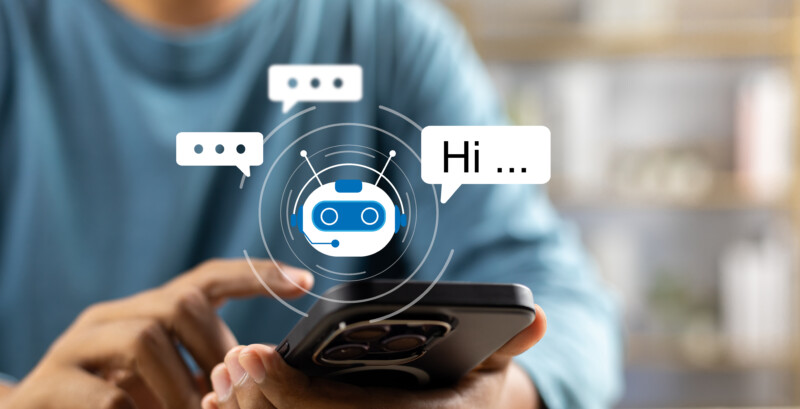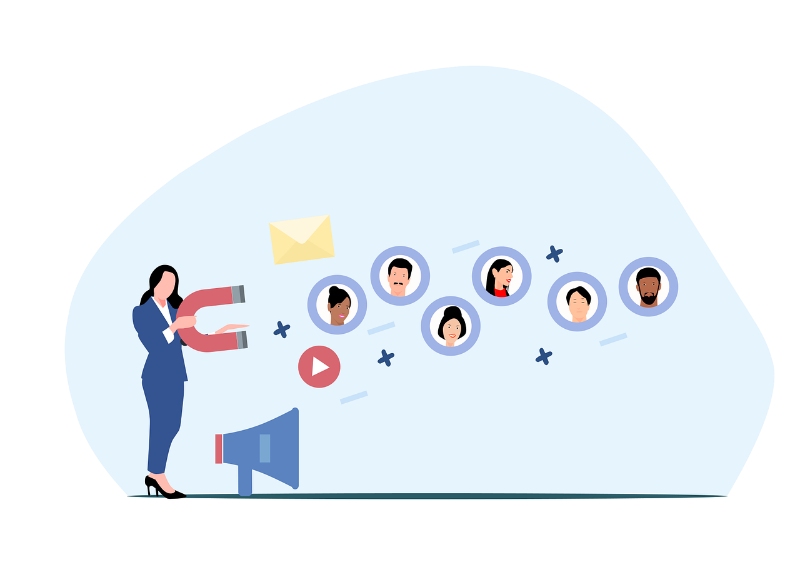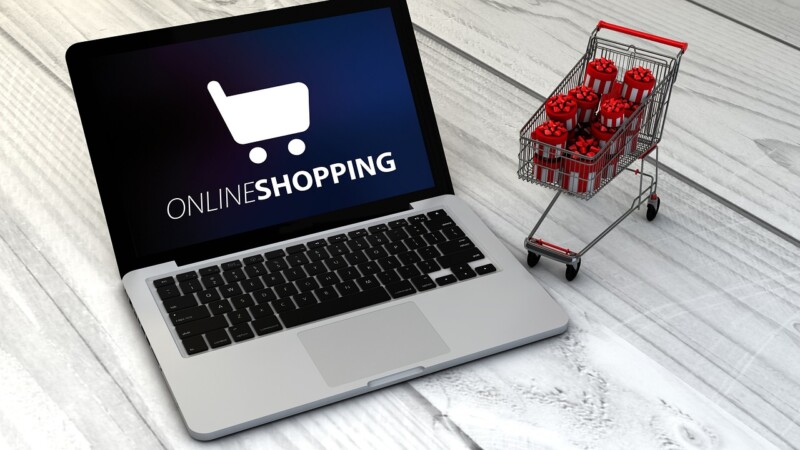Making money online always sounds tempting, right? But if you’ve spent any time poking around, you know those “get rich quick” promises are usually just smoke and mirrors.
I’ve been in this game for years, writing for personal finance sites and testing side hustles myself. Let’s be real—AI chatbots aren’t a magic money button, but they can absolutely become a legit income stream if you go in with both eyes open.
The real trick is figuring out how to turn chatbot technology into something people actually need. If you’re solving problems, you’re already way ahead of the hype-chasers.
It’s smart to be skeptical. So many folks think these tools will rain down passive income overnight, but then they bail when nothing happens right away.
That’s not how real businesses grow. What you’ll find here is a breakdown of profit strategies that actually have legs—stuff like subscriptions, custom services, and even white-labeling.
If you’re willing to put in the hours, these ideas can open up new income streams—without falling for the usual internet nonsense.

A subscription model is probably one of the easiest ways to earn a steady income from your chatbot. You set up a monthly or yearly fee, and users pay for ongoing access—think Netflix, but instead of movies, they get personalized answers or support.
You can create different tiers—basic, premium, maybe even an enterprise level. Each one unlocks more features or faster replies. People love options, and they’ll usually pick whatever fits their budget and needs.
I’ve seen this work especially well for niche audiences. For instance, a chatbot that helps small business owners with bookkeeping tips? That’s worth a modest monthly fee if it saves time or headaches.
Setting it up isn’t rocket science, but you’ll need a payment system, clear pricing, and a chatbot that actually delivers value. Otherwise, folks will just bounce.
Curious how others pull this off? Here’s a deeper dive into AI subscription models that generate recurring revenue.

Chasing down leads by hand is exhausting. Letting an AI chatbot qualify prospects while you sleep? Now we’re talking.
I’ve watched businesses cut out hours of cold outreach just by letting a bot handle those first few steps. The chatbot can ask smart questions, grab emails, and even drop qualified leads straight into your CRM.
Platforms like AI lead generation tools already do this well, and they just keep getting sharper.
Getting started isn’t too technical. Hook up your chatbot to your website or landing page, decide on the right qualifying questions, and sync everything with your sales system. You’ll probably notice fewer dead-end conversations and more time spent with people who are actually interested.

When you offer custom chatbot development, you’re not just pushing software—you’re fixing real business headaches. One client might need a booking assistant for their restaurant, another wants a support bot for their online shop.
Your job is to design and build something that fits like a glove. I’ve noticed clients will pay more for a chatbot that’s actually tailored to their brand and workflow. Generic bots? Nobody’s excited about those anymore.
If you can show how your bot improves customer experience or saves time, you’ll stand out. Usually, you’ll start by gathering requirements, picking the right platform, and building a prototype.
After that, you test, tweak, and train it with real data. Companies like Space-O AI are seeing a ton of demand for custom solutions tied to proprietary data.
This path takes patience and solid people skills. You’ll spend time clarifying what clients want, handling revisions, and making sure the final product actually works. But if you like working one-on-one, this can be a pretty rewarding way to monetize chatbots.

Mixing AI tools with outsourced support can save you a bundle. The AI handles all the repetitive questions, while human agents step in for the trickier stuff.
I’ve seen businesses cut costs by blending AI chatbots and outsourced teams. The chatbot filters out the easy tickets, so your staff can focus on real problems instead of endless “where’s my order?” pings.
If you’re starting out, pick one support channel—maybe live chat—and add an AI bot for the basics. Then, team up with an outsourcing partner who can handle anything the bot can’t.
Over time, you can branch out into email, phone, or social support as the system proves itself. If you want to see how other companies do this, check out this read on AI and outsourcing in customer support.

If you run an online shop, you know it’s tough getting customers to toss that extra item in the cart. Chatbots can help by suggesting add-ons or upgrades right when someone’s ready to buy.
It’s kind of like a friendly store clerk who says, “Hey, this goes great with what you picked.” But it happens automatically, all day, every day. With the right setup, chatbot-driven upselling can boost your average order value without annoying anyone.
To get rolling, link your chatbot to your product catalog and train it to spot buying patterns. If someone adds a phone, the bot can suggest a case or charger. There are tools focused on AI-powered upselling and cross-selling that make this a breeze.
It’s not instant magic, but once you dial in the flow, it works quietly in the background. You’ll free yourself from the grind of manual upselling and give your customers a smoother shopping trip.
See Related: High-Leverage Ways to Make Money with ChatGPT Agent Mode

If you’re running an AI chatbot, don’t overlook the goldmine in all that user feedback. People drop little nuggets of insight in every conversation, and if you know how to capture and analyze them, that’s real market research.
Platforms like AI market research tools can help you turn raw chat logs into something you can actually use.
You can also set up chatbots to run quick surveys or ask simple follow-ups. Since chatbots feel less formal than regular surveys, people are more likely to answer.
Some businesses already use chatbots for data collection to reach folks in different time zones without hiring extra staff.
From my own experience, don’t overthink it. Start with a couple of questions after a purchase or support chat, then see what data actually helps you make better decisions before adding more complexity.

Personalized marketing campaigns are where chatbots really shine. Instead of blasting the same offer to everyone, you can guide people toward stuff they actually care about.
I’ve seen this make a difference in e‑commerce. A chatbot can ask a couple of questions and recommend products based on what someone’s already shown interest in. Platforms like Botpress make it easy for businesses to do this without hiring more staff.
You don’t need to go wild with the setup. Start with a chatbot that grabs the basics—like what someone’s shopping for—and use that info to trigger a relevant deal. Down the road, you can level up with tools for AI-driven campaigns.
The trick is to keep it simple at first. Build trust by showing you get what your customers want, then layer in more personalization as you learn what works.
An interactive sales funnel with chatbots can guide your visitors step by step instead of leaving them wandering around your site.
You’re basically creating a conversation that feels natural but still points people toward a purchase or signup.
I’ve noticed that real-time responses—like a chatbot popping up with the right question—keep people on your site longer.
And when they hang around, they’re just more likely to buy. Tools like AI funnel automation make this setup a breeze compared to building it all yourself.
Start by mapping out your funnel: awareness, interest, decision, action.
Plug in a chatbot that can handle each stage. Maybe it answers basic questions at first, then later drops a product suggestion when the timing feels right.

When you connect your chatbot to your CRM, you create a direct line between customer conversations and your sales data.
Every chat feeds directly into your pipeline, eliminating the need for manual entry. I’ve watched small businesses save hours every week just by automating lead capture like this.
Usually, you’ll give your chatbot access to the CRM’s API or use a connector.
Popular platforms keep it pretty simple, though you’ll want someone technical to map the fields. It’s a bit like wiring a new appliance—solid connections matter.
With integration, your chatbot can log calls, update contacts, and qualify leads before they ever hit your sales team.
Guides like this CRM chatbot integration overview walk you through it, step by step.
Honestly, you don’t just save time—you also reduce human error.
No more missed emails or forgotten updates. Your CRM becomes a living record of every customer touchpoint, and you end up with cleaner data for smarter choices.

The freemium model is a classic way to get people using your chatbot without scaring them off with a price tag.
You let folks try out the basics for free, then charge for the good stuff—advanced tools, higher limits, or actual support when they need it.
I’ve used this myself, and honestly, it works best when your free tier is helpful but leaves people wanting more.
Think about Grammarly or Jasper—both hooked users with freemium before nudging them into paid plans. But if you give away too much, nobody upgrades. That balance is tricky.
Set up clear feature tiers, a smooth upgrade path, and a payment system that doesn’t make people grit their teeth.
Plenty of AI founders in 2025 are betting on freemium models with premium upsells because they lower the barrier to entry while still creating a path to revenue.
See Related: AI-Powered Side Hustles You Can Start Today

Licensing your chatbot tech to enterprises can turn into a steady revenue stream.
Instead of selling one-off projects, you give companies the right to use your platform under a structured agreement. If you’ve built a chatbot framework that can scale across industries, this is a solid play.
Pricing models matter here. Some folks go per-seat or per-interaction, others stick with fixed annual licenses.
Tools like Labs64 NetLicensing help you manage these deals and protect your IP.
From my side, I’ve noticed enterprises crave predictability. They don’t want surprise costs every quarter.
If you can offer a clear licensing plan and strong support, you’ll earn trust and longer contracts. Just brace yourself—big orgs move at their own pace.

Affiliate marketing through chatbots is one of those sneaky-good strategies that can build income if you set it up right.
Instead of clumsily pushing links, your chatbot can naturally recommend products in conversation. That feels less like an ad and more like a helpful nudge.
Design a chatbot to guide users toward affiliate products that actually fit their needs.
If someone’s asking about fitness, offer them a link to a workout app or gear. It works best when the product fits the chat’s context.
To get started, pick the right affiliate program and connect it with your chatbot platform.
Tools like affiliate chatbots make tracking clicks and commissions less of a headache. Start small, test your messages, and tweak based on what your audience bites on.

If you run a service business, you already know scheduling can eat up hours you’ll never get back.
A chatbot can take that off your plate by letting customers book directly—no more email ping-pong. It’s a tiny shift, but it lets you focus on real work.
Set up your chatbot to sync with your calendar tools.
When someone books, it updates automatically and avoids double-booking. I’ve used this for a consulting project, and honestly, it saved me from missing calls I would’ve otherwise forgotten.
The setup isn’t rocket science.
Platforms like appointment booking chatbots connect to Google Calendar, Outlook, or whatever you already use. Define your slots, add reminders, and test the flow so it feels natural for clients.
Don’t forget—chatbots can send reminders or reschedule requests, which slashes no-shows.
That’s a sneaky profit booster, since fewer missed appointments mean more billable hours for you.

Adding in-chat payments lets your chatbot handle purchases right inside the conversation.
Customers never have to click away, which usually means fewer drop-offs and more completed sales. I’ve seen small shops double their checkout rate just by keeping everything in one flow.
You’ll need to connect your chatbot with a secure payment processor.
Stripe or PayPal both have APIs that plug right in. It’s not too tough, but if you’re not technical, grab a developer. Security matters here—don’t cut corners.
I like this strategy because it’s so natural for the customer.
They ask a question, get an answer, and pay without ever leaving the chat. Businesses that streamline chatbot payments usually see higher conversions and fewer support headaches. It’s a practical move that just works.

White-label chatbot platforms let you sell AI assistants under your own brand—no coding required.
You basically rent the tech, slap your name on it, and offer it to clients as if you built it. This is especially sweet if you already run an agency or SaaS business.
Providers like Quickchat or Botpress handle the heavy lifting.
You get tools to customize the design, branding, and features so the chatbot looks and feels like your own product.
Set up usually means creating your reseller account, adding your branding, and packaging chatbot services into monthly or project-based offers.
The real win? Recurring revenue. You charge clients for setup and ongoing support, while the platform quietly handles the tech in the background.
See Related: AI and Your Wallet: Exploring Lucrative Careers in the AI Tech Field

The money your chatbot brings in isn’t just about direct sales.
You’ve got to look at how it cuts costs and shapes the long-term value of your customers, too.
Profitability comes down to both sides—revenue growth and expense reduction—while keeping an eye on customer behavior over time.
You want to know exactly how much revenue your chatbot drives—not just take a wild guess.
That’s where attribution models come in. They help you track the connection between a chatbot interaction and a final purchase or upsell.
The simplest model gives the chatbot credit for the last click before a sale.
But that usually misses its role in earlier steps, like answering questions or nudging a hesitant buyer. A multi-touch attribution model spreads credit across the journey, which honestly gives you a better picture.
I like to compare different models side by side. For example:
| Model | Strength | Weakness |
|---|---|---|
| Last-click | Easy to track | Misses early influence |
| First-click | Shows initial driver | Shows the initial driver |
| Multi-touch | Balanced view | More complex setup |
If you want to spend your ad budget wisely or tweak your sales funnel, you can’t skip this.
Attribution tells you if your chatbot is just a nice add-on or a real revenue engine.
Let’s be honest—sometimes the fastest way to boost profits isn’t chasing new customers. It’s trimming the fat. Chatbots can seriously cut call center volume, speed up replies, and take care of those repetitive questions that usually drain your payroll.
But here’s the catch: you need to measure those savings, not just guess. Track stuff like deflection rate (how often the bot solves things without a human), average handling time, and what you’re spending on staff before and after the bot rolls out.
Platforms like chatbot analytics can show you exactly where the bot’s taking the load off your support crew. I’ve watched businesses pocket thousands each month just by automating FAQs. It’s wild.
Don’t get too comfortable, though. A clunky bot can annoy users and actually make more work for your team. Keep an eye out for hidden costs—like more escalations or customers bailing—while you’re counting your savings.
Short-term revenue is fine, but the real magic happens when you boost Customer Lifetime Value (CLV). If your chatbot helps keep people coming back, nudges them toward upgrades, or just keeps them happy, you’re winning.
Think about it: fast, helpful answers make people want to return. When your bot gently suggests higher-margin products or keeps folks engaged with your brand, their total spend just keeps climbing. Tools like Inbenta do a good job tying user satisfaction and engagement to CLV.
To measure this, compare groups who’ve chatted with your bot versus those who haven’t. Look at their repeat purchase rates, average order value, and how often they leave. Even a slight uptick in CLV can cover the cost of building and running your chatbot.

If you want to squeeze more revenue out of your chatbot, focus on making every conversation count. Tweak how people interact, boost the value of each chat, and make buying as easy as possible—no hoops to jump through.
It’s funny how small design changes, better targeting, or a smoother integration can suddenly make profits jump. Sometimes it’s just a matter of paying attention to the details.
A/B testing is non-negotiable if you’re serious about growth. Test different chatbot flows—like the greeting, the call-to-action button, or even the way you phrase things—and see which one actually gets people to sign up or buy.
One time, I swapped “Get Started” for “Try It Now,” and conversions jumped. Who knew? The trick is to change just one thing at a time so you’re not left guessing what worked.
Don’t just watch clicks, though. Track how many people finish the conversation, how long they stick around, and—obviously—if they actually buy. I like to keep it all organized in a simple table:
| Test Variable | Version A | Version B | Winner |
|---|---|---|---|
| Greeting Message | “Hi there!” | “Welcome back!” | B |
| Button Text | “Start Now” | “Try It Free” | A |
Upselling with a chatbot should feel like a friendly nudge, not a pushy sales pitch. Make sure your bot recommends stuff that actually fits what the person wants or needs.
Say someone just grabbed a basic software plan—the bot could mention an advanced version with extra features. Or if they bought shoes, maybe it suggests matching socks or a cleaning kit. The key? Make it feel personal.
Timing matters, too. Sometimes, a quick follow-up a day later lands better than an instant upsell. Use customer data wisely, but always keep the tone friendly and helpful.
Honestly, even little touches—like using someone’s name or referencing their last order—can make a big difference. Suddenly, it feels like a real recommendation, not just another pitch.
If you want to kill friction, let people pay right in the chat. Plug in Stripe, PayPal, or Apple Pay so users can buy without ever leaving the conversation. That convenience alone can seriously cut down on abandoned carts.
Every extra step—clicking out, filling another form—just risks losing people. Keep it all in one flow and watch how much smoother the buying process gets.
Integrated payments open the door for microtransactions, too. Your bot can sell add-ons or upgrades in seconds, with no need for a long checkout. If you run subscriptions, you can even automate renewals right there.
Just make sure everything’s secure and follows payment rules. Once you’ve got that locked down, your chatbot isn’t just for support—it’s a revenue engine.
AI chatbots can become true revenue machines if you focus on scalable models—think subscriptions or automated lead gen. They can even pull in passive income and fit right into social platforms where your audience hangs out anyway.
Start with subscription-based access if you’ve got a bot that solves a particular problem people will pay for every month. It’s kind of like running a mini SaaS, but lighter.
Lead generation automation is another strong move. Your chatbot can qualify prospects, grab emails, and drop folks straight into your funnel—no manual work required. Some folks even sell those leads to other businesses.
If you know your way around development, custom chatbot services are always in demand. Companies want bots that fit their unique workflows. And don’t forget AI-powered customer support outsourcing—you can handle support at scale and charge a flat or recurring fee.
E-commerce store owners can use chatbot-driven upselling. When you drop in a timely product suggestion during a chat, it can lift average order value without feeling pushy.
Need more ideas? Check out these 10 proven ways to monetize chatbots in 2025.
One of the simplest plays is launching a chatbot that runs itself, like a digital product assistant. Build it, set access or usage fees, and let it bring in a steady trickle of income over time.
You can also sneak in affiliate marketing. If your bot suggests products or tools and someone buys through your link, you get a commission. It’s not a get-rich-quick scheme, but it’s a nice way to keep your bot working for you 24/7.
Some folks create chatbots for niche audiences—fitness, finance, whatever—and monetize with memberships, premium perks, or ads. If you want to see how others are doing it, this guide on earning money with AI chatbots in 2025 is worth a look.
Social media’s a playground for chatbots, honestly. People hop on these platforms ready to talk, so why not meet them where they already are?
Set up a bot to jump into the conversation with your followers. Let it answer quick questions and nudge folks toward a purchase or a signup—no need to be pushy.
On Facebook or Instagram, chatbots can handle automated campaigns with a bit of flair. Maybe they drop a discount code to anyone who comments, or walk someone through a playful product quiz.
That sort of interaction? It actually feels personal, and let’s be real, it works wonders for conversions.
Sometimes, instead of sending people off to a separate landing page, bots can just grab leads right inside the app. It’s way more seamless and keeps folks engaged without making them jump through hoops.
If you’re curious for more ideas, I found some solid inspiration here: strategies to boost revenue with AI-powered chatbots.
Last updated: September 13, 2025